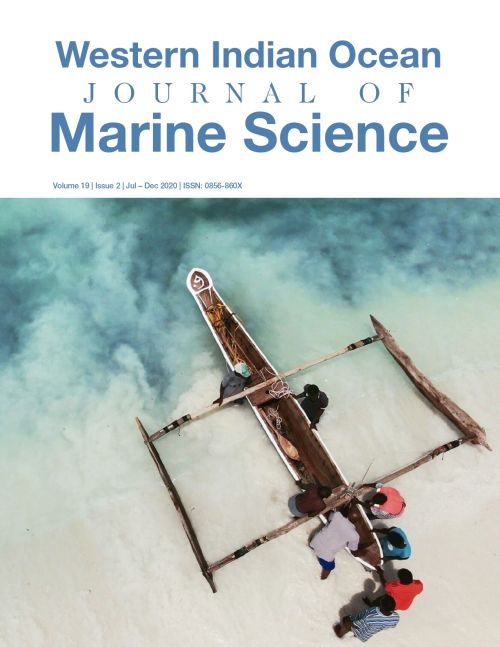Main Article Content
Nematodes as bio-indicators of physical disturbance of marine sediments following polychaete bait harvesting
Abstract
Sediment disturbance in marine environments is caused by activities including polychaete bait harvesting, trawling, dredging, sediment erosion and treading. These activities affect the benthic communities by changing the densities, community assemblage and diversity. The aim of this study was to evaluate the potential of nematodes as indicators of sediments disturbance following polychaete bait harvesting. The study was conducted in three sites experiencing different bait harvesting intensities in Mida Creek, Kenya. Sediment samples were collected from the mudflats during low tide, preserved in 5% formalin and transported to the laboratory for processing and identification of nematodes. The highly disturbed site recorded the lowest nematode genus richness while the less disturbed sites had the highest. Overall, the most abundant nematode genera in the non-disturbed (Dabaso) and less disturbed sites (Kirepwe) were selective deposit feeders (Spirinia and Terschellingia), while most disturbed sites (e.g. Mayonda) had predators/omnivores (Pheronus, Aporcelaimellus) and selected members of the genus Spirinia. The disturbed site was characterised by low nematode diversity (H’) and low dominance (D) while the non-disturbed and less disturbed sites had higher diversity and dominance. Clearly, nematode community assemblage, diversity and feeding guilds changed following disturbance to a low diversity that favoured higher proportions of predator/omnivore taxa.




